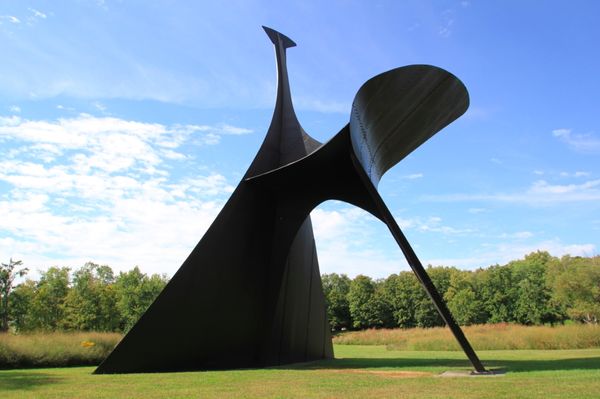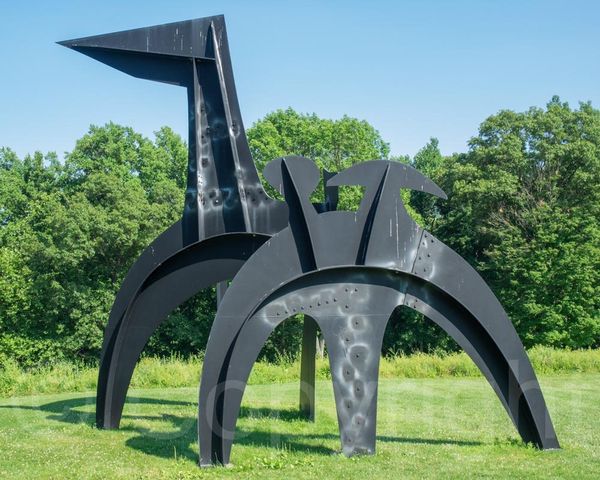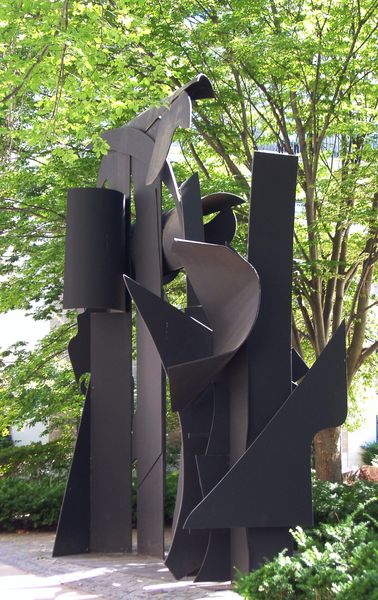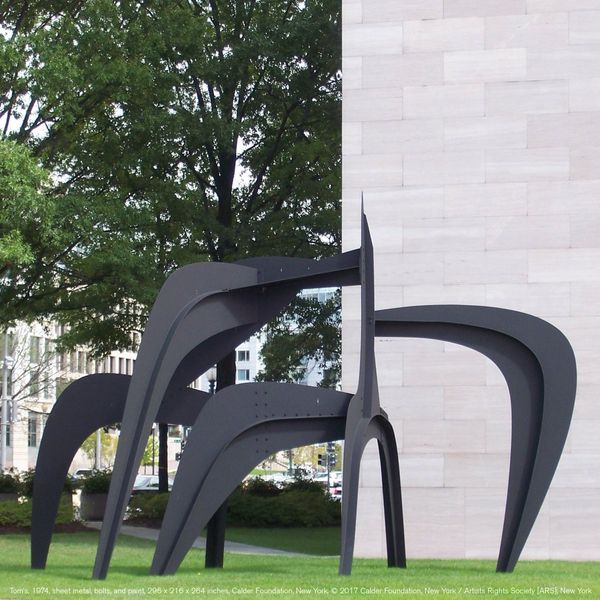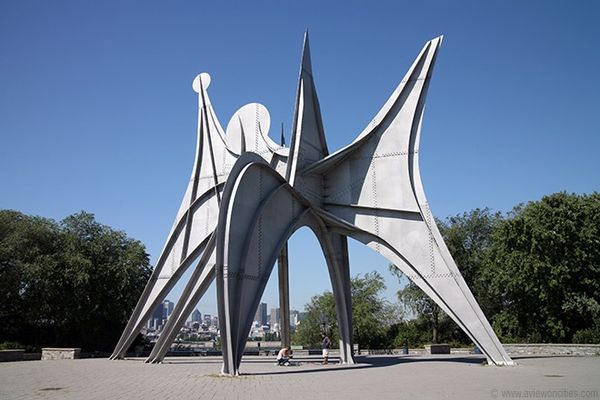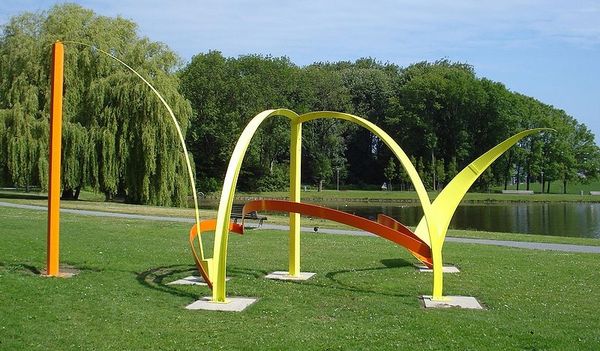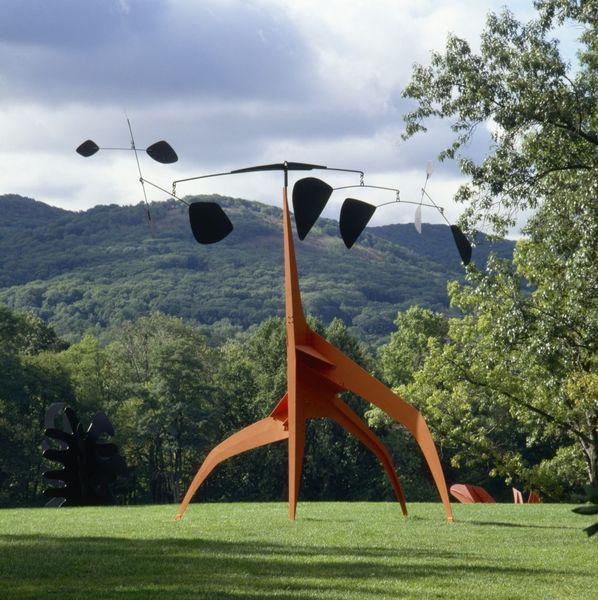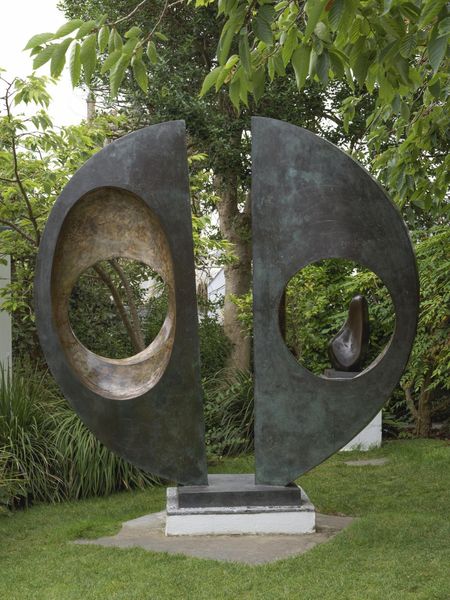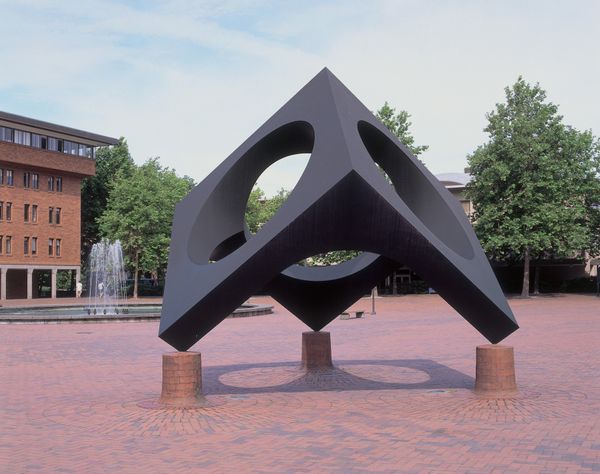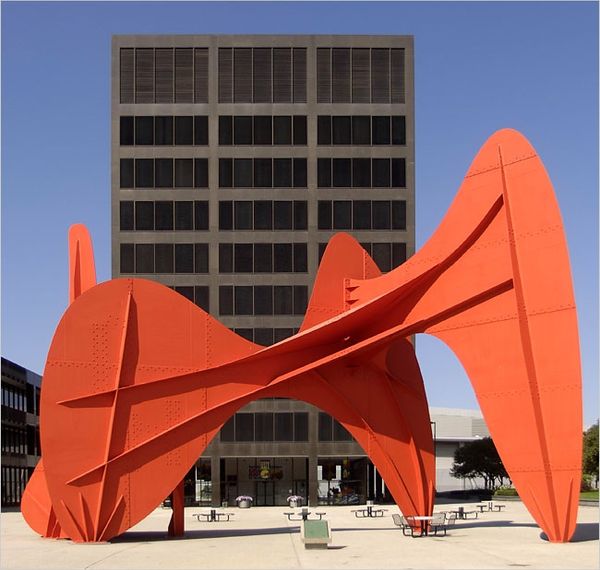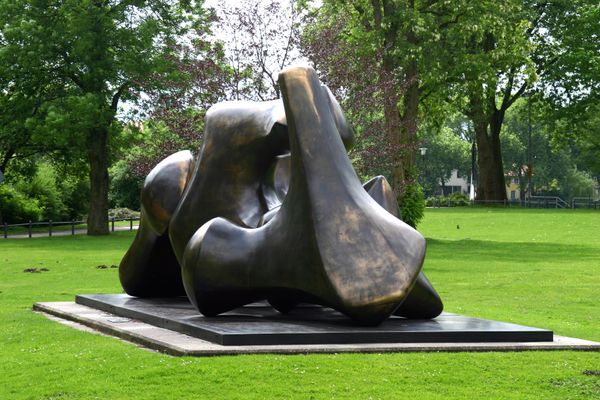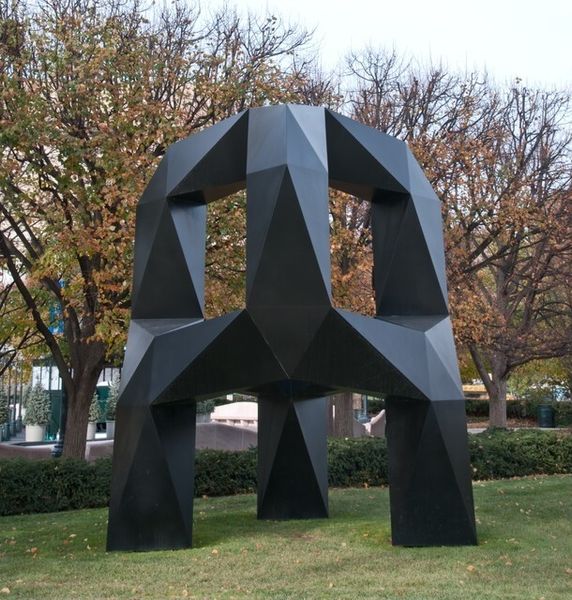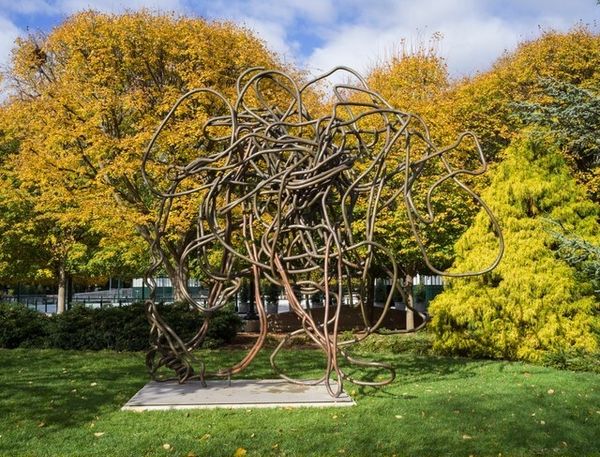
Copyright: Alexander Calder,Fair Use
Editor: Standing before us is Alexander Calder’s "Cheval Rouge," created in 1974. It's a striking, large-scale sculpture made of metal and painted a vibrant red. I'm struck by how its abstract, geometric forms interact with the natural surroundings. What do you see in this piece from a formal perspective? Curator: Focusing on its formal qualities, one notices first the tension between line and plane, between curve and angle. The interplay of these forms dictates the viewer's eye, encouraging one to circumambulate the piece in an attempt to grasp its wholeness. Consider also the boldness of its colour. The flat, primary red is not merely decorative but rather asserts the sculpture's presence within its environment, defining its spatial relations to the verdant surroundings. The bolted construction exposes the structural nature of its materiality, suggesting a fusion between engineering and art. Editor: So, the colour and the visible construction contribute to its formal strength, not just its aesthetic appeal? Curator: Precisely. They become integral to the structural dynamic. If the colour were different, would the relationships between the artwork and nature remain? Observe also how the geometric shapes aren't purely abstract, but contain echoes of the organic world and even suggest implied movement. Is the titular suggestion of 'horse' ironic or integrated? Editor: I hadn't considered how the title complicates its abstract nature. The combination of such intense formalism and potential natural allusion makes this sculpture even more captivating! Curator: Indeed. A testament to the layered complexity inherent in masterful form.
Comments
No comments
Be the first to comment and join the conversation on the ultimate creative platform.
